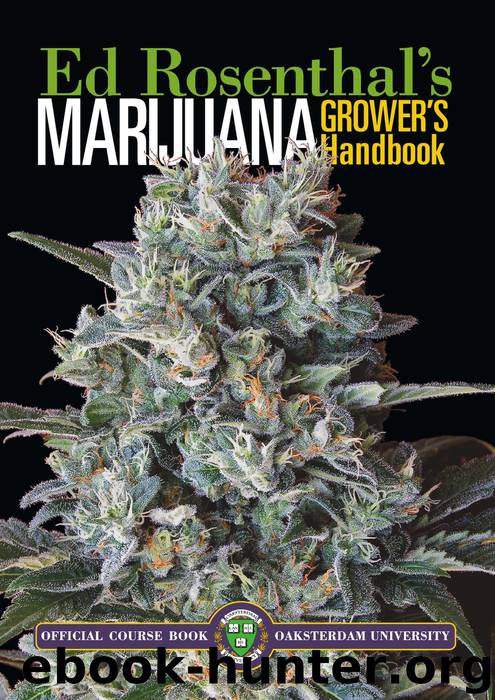Marijuana Grower's Handbook by Ed Rosenthal

Author:Ed Rosenthal
Language: eng
Format: epub
Tags: Gardening, Plants: Marijuana
ISBN: 9780932551504
Publisher: Quick Trading Company
COIR
Coir, or coco peat, is made from the soft fibers and pith that protect the inner kernel of the coconut. Horticultural coir is made from ripe coconuts. As the fruit ripens the fibers, initially composed mostly of cellulose, change to high lignin content. Lignin, which is also found in wood, resists decomposition better than either bark or peat moss, so it can be used and re-used far longer than bark or peat.
Coir holds between five and eight times its own weight in water. It also has a fairly high cation exchange rate; the fibers not only absorb water but also chemically hold nutrients and buffer nutrient swings. The air porosity, the amount of air the material holds, depends on the size of the particles and fibers. The finer the fiber, the more water it holds in relation to air. The larger the particle sizes, the lower the initial water retention.
Another advantage coir holds over peat moss and bark is that it has a higher pH, and is in the acceptable range for growing mediums of 5.8-6.4. It is also a source of potassium as well as iron, manganese, zinc and copper, which it releases gradually. The finer particles, the pith, can be thought of as organic potassium fertilizer with a sponge like molecular structure. It is combined with short fibers that act as an anti-compacting texturizer.
There is anecdotal evidence that coir possesses fungicidal qualities, which may stem from the lignin or from its surface structure.
There are many grades of coir based on the particle size and which type of tissue is used. Long fibers have granular material, called pith, attached before processing. Sometimes the two materials are left together but usually they are separated into fiber and pith.
Each coir processor has its own recipe for a particular combination of pith and fiber. The more pith that it contains, the better its water retention, but the less air it holds.
Coir chips are another form of coir that is available. These are pieces of coir sliced into cubes ranging from 0.25-0.75” (0.6-2 cm). They are used in place of bark in some soil recipes, as a planting medium for orchids and as a hydroponic planting medium.
I found that some brands of both coir and coir chips contain residual salt from the manufacturing process or from storage. This has to be removed before use, which is not hard to do. Just soak it in a basin of warm water for about 15 minutes and then press until just moist. Some brands now advertise that they come pre-washed and don’t need to be rinsed.
BARK
Chopped or ground bark is often used as an ingredient of planting mixes. The bark’s qualities, such as its water holding capacity and pH level differ by tree variety. The grade of bark and the size of the pieces affect water-holding capacity. The smaller the pieces, the more water they hold and the less airspace between them. Bark contains carbon so it is subject to microbial disintegration. However, this occurs at a slower rate than with peat moss.
Download
This site does not store any files on its server. We only index and link to content provided by other sites. Please contact the content providers to delete copyright contents if any and email us, we'll remove relevant links or contents immediately.
Turbulence by E. J. Noyes(7041)
The Thirst by Nesbo Jo(5786)
Gerald's Game by Stephen King(3919)
Be in a Treehouse by Pete Nelson(3215)
Marijuana Grower's Handbook by Ed Rosenthal(3119)
The Sprouting Book by Ann Wigmore(3054)
The Red Files by Lee Winter(2917)
The Remains of the Day by Kazuo Ishiguro(2620)
Sharp Objects: A Novel by Gillian Flynn(2445)
Christian (The Protectors Book 1) by L. Ann Marie(2395)
Organic Mushroom Farming and Mycoremediation by Tradd Cotter(2308)
The Culinary Herbal by Susan Belsinger(2063)
Stone Building by Kevin Gardner(1995)
The Starter Garden Handbook by Alice Mary Alvrez(1925)
Lilac Girls by Martha Hall Kelly(1877)
The Unlikely Pilgrimage of Harold Fry by Rachel Joyce(1837)
The Lean Farm Guide to Growing Vegetables: More In-Depth Lean Techniques for Efficient Organic Production by Ben Hartman(1786)
Urban Farming by Thomas Fox(1749)
Backyard Woodland by Josh VanBrakle(1588)
